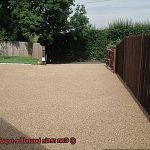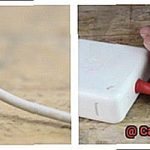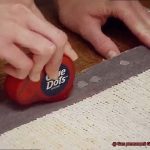We’re about to take you on a wild ride through the world of polyethylene pipe and its potential for gluing. You see, this pipe is a real superstar in the construction industry. It’s tough as nails, flexible like a gymnast, and won’t let corrosion ruin its party.
From plumbing to irrigation to natural gas distribution, polyethylene pipes are everywhere.
But here’s the million-dollar question: can these bad boys be glued together? That’s what we’re here to find out today. So buckle up and hold on tight as we explore the different types of polyethylene pipes, break down the gluing process, and reveal the pros and cons of using adhesive to join these pipes.
We’ve got all the juicy details coming your way. Get ready to uncover the secrets behind gluing polyethylene pipes.
What is Polyethylene Pipe?
Contents
- 1 What is Polyethylene Pipe?
- 2 Traditional Methods for Connecting Polyethylene Pipes
- 3 The Growing Demand for an Adhesive Solution
- 4 Can Polyethylene Pipe Be Glued?
- 5 Specialized Adhesives for Bonding Polyethylene Pipes
- 6 Preparing the Surface of the Polyethylene Pipe
- 7 Applying the Adhesive
- 8 Factors to Consider When Determining Whether to Use Adhesive Bonding or Not
- 9 Conclusion
Polyethylene pipe, also known as PE pipe, is a versatile and durable option for various plumbing and construction projects. Made from a thermoplastic polymer called polyethylene, this type of plastic pipe offers numerous advantages that make it a popular choice among professionals in the industry.
One of the key characteristics of polyethylene pipe is its resistance to corrosion and chemicals. Unlike metal pipes that can rust and degrade over time, polyethylene pipes are impervious to acids, alkalis, and solvents. This makes them an excellent choice for applications where chemical resistance is crucial, such as in industrial settings or underground installations.
In addition to its chemical resistance, polyethylene pipe is also highly flexible. These pipes can withstand ground movement and temperature variations without cracking or breaking. This flexibility not only ensures the longevity of the pipe but also simplifies the installation process. With fewer fittings and joints required, installing polyethylene pipe becomes faster and more cost-effective.
Polyethylene pipes also have a smooth interior surface, which prevents scale and sediment buildup. This ensures a continuous flow of water or other fluids without any blockages or restrictions. Additionally, the smooth surface reduces friction loss, resulting in better overall system efficiency.
When it comes to joining polyethylene pipes, heat fusion is the most common method used. Heat fusion involves heating the ends of the pipes and then pressing them together to create a strong and permanent bond. This method eliminates the need for additional fittings or connectors and ensures leak-proof joints that can withstand high-pressure applications.
While gluing or adhesive bonding is not typically recommended for polyethylene pipes due to their low surface energy, there are specialized adhesives available that can effectively bond these pipes. These adhesives are specifically designed for polyethylene and provide a reliable solution when heat fusion is not feasible or preferred.
Traditional Methods for Connecting Polyethylene Pipes
Polyethylene pipes are a versatile and widely used solution for various industries, known for their corrosion resistance, flexibility, and smooth interior surface. While heat fusion is the primary method for joining these pipes, traditional methods such as mechanical fittings and gluing can also be utilized.
In this blog post, we will delve into the world of connecting polyethylene pipes, with a particular focus on the superhero-like abilities of glue as a connection method.
Mechanical Fittings: Easy and Secure Connections
One of the tried-and-true methods for connecting polyethylene pipes is through mechanical fittings. These fittings are designed to provide both ease and security in connections. Crafted from durable materials like brass or stainless steel, they consist of a body with two ends that can be connected to the pipe ends. A gasket or sealing ring ensures a watertight connection.
To connect the pipes using mechanical fittings, the pipe ends are carefully cleaned and prepared. The fitting is then inserted onto one end while the other end is inserted into the opposite end of the fitting. Finally, a wrench or suitable tool is used to tighten the fitting, creating a secure connection.
Heat Fusion: The Power of Melted Joints
For larger diameter pipes or when a seamless joint is required, heat fusion techniques come into play. Two main types of heat fusion techniques are employed: butt fusion and electrofusion. Butt fusion involves heating the pipe ends until they reach their melting point.
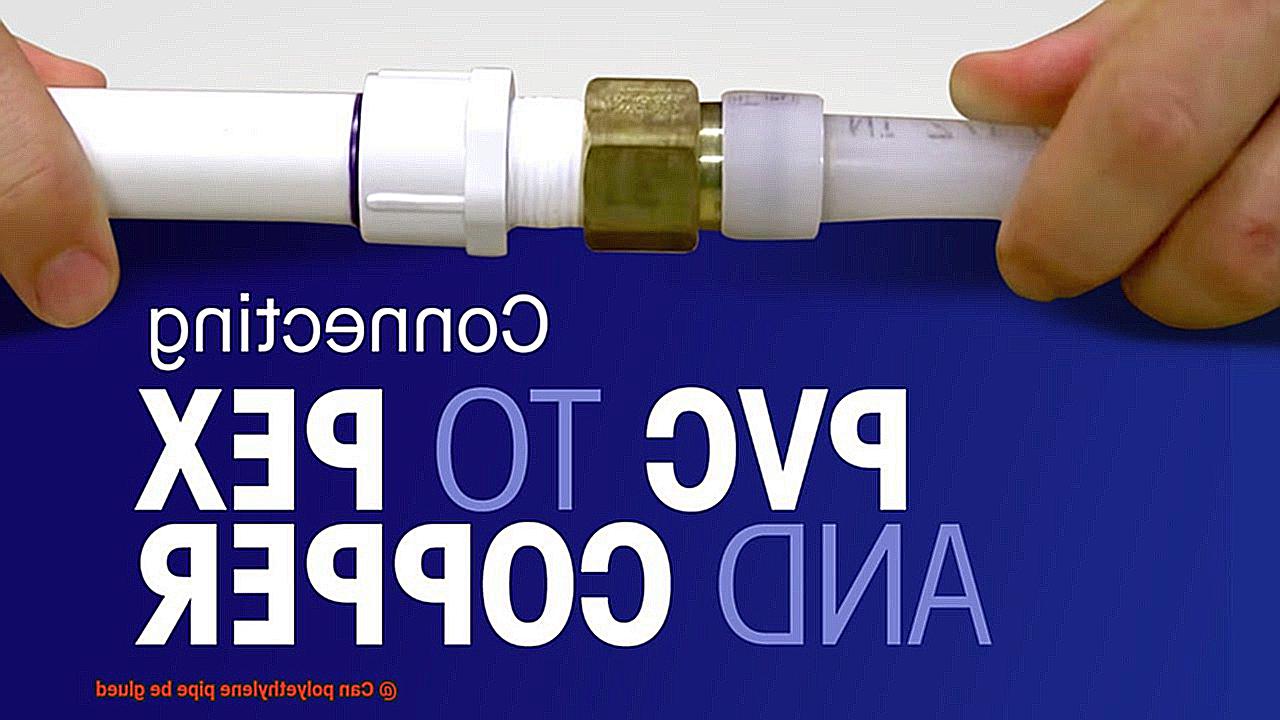
Once melted, the pipe ends are pressed together and held in place until the joint cools and solidifies. On the other hand, electrofusion utilizes an electric current to heat a wire coil embedded in the fitting, which then heats and fuses the pipe ends together.
Glue as a Superhero Connection Method:
When heat fusion is not an option or when joining pipes of different materials, specialized adhesives can come to the rescue. These adhesives are specifically designed for bonding polyethylene pipes and fittings, providing a strong and durable connection that ensures a leak-free flow of fluids. Glue can be especially useful in situations where flexibility is required, allowing the pipes to move without compromising the connection. Additionally, glue provides a reliable solution for connecting pipes of different materials, promoting versatility in various applications.
The Growing Demand for an Adhesive Solution
The demand for an adhesive solution for polyethylene pipes has been skyrocketing in recent years. This surge in demand can be attributed to the limitations of traditional joining methods and the multitude of advantages that adhesive solutions bring to the table.
In this blog post, we will dive into the reasons behind the growing demand for adhesive solutions and explore why they have become the preferred choice for bonding polyethylene pipes.
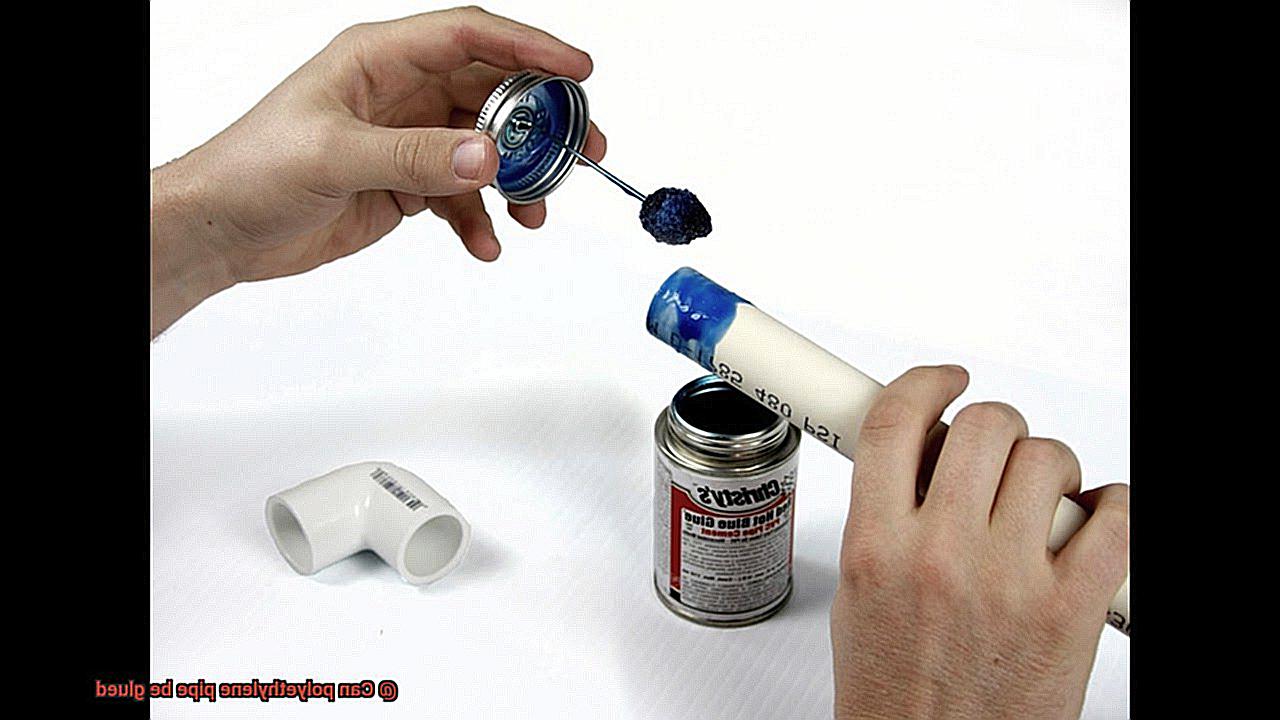
Advantages of Adhesive Solutions:
- Simplicity at its finest: Adhesive solutions provide a straightforward and hassle-free bonding process, eliminating the need for complex mechanical fittings or specialized equipment.
- Cost-effectiveness in every way: Adhesives offer an economical alternative to heat fusion techniques, reducing installation costs and saving valuable time.
- Unmatched versatility: Adhesives can bond different types of polyethylene pipes, including high-density polyethylene (HDPE) and low-density polyethylene (LDPE), offering flexibility across a variety of applications.
- A bond that stands the test of time: Adhesive solutions ensure leak-free connections, providing a reliable and long-lasting bond between polyethylene pipes.
Advanced Adhesive Technology:
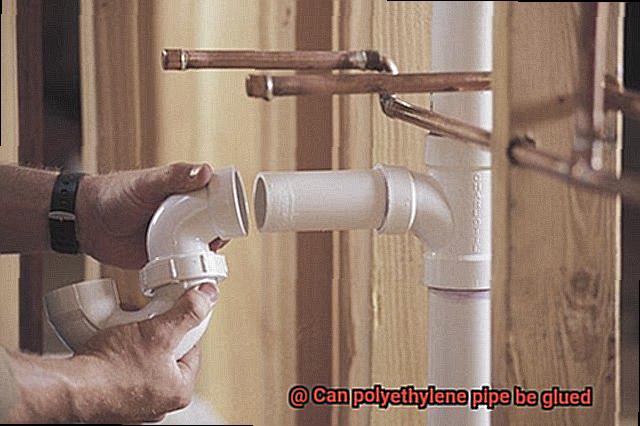
With advancements in adhesive technology, manufacturers have developed specialized products that are designed specifically for bonding polyethylene pipes. These adhesives offer exceptional adhesion to polyethylene surfaces and are engineered to withstand different environmental conditions and application requirements.
Market Growth and Future Prospects:
The market for adhesive solutions for polyethylene pipes is projected to continue its impressive growth as more industries recognize the array of benefits they offer over traditional joining methods. As research and development in this field progress, we can anticipate the development of even more advanced and specialized adhesive products tailored to meet specific application needs.
Can Polyethylene Pipe Be Glued?
Polyethylene pipe has gained significant popularity in various applications due to its durability and flexibility. However, when it comes to joining these pipes together, many people wonder if glue can be used as a bonding agent.
Here, we will explore the truth behind whether polyethylene pipe can be glued using traditional adhesives. Get ready for some eye-opening insights.
The Reality Check:
Polyethylene pipe cannot be glued using traditional adhesives like PVC glue or super glue. Why? It all boils down to the nature of polyethylene itself. Polyethylene is a thermoplastic material that requires heat fusion techniques for bonding rather than chemical adhesives.
The Heat Fusion Technique:
Heat fusion involves melting the ends of the polyethylene pipes and pressing them together to create a strong and durable bond. There are two main methods of heat fusion: butt fusion and electrofusion.
Butt Fusion:
Butt fusion is the most commonly used method for joining polyethylene pipes. It requires specialized heating tools to heat the ends of the pipes until they reach the appropriate melting point. Once melted, the ends are quickly pushed together, creating a seamless joint. As the plastic cools down, it solidifies and forms a robust bond between the pipes.
Electrofusion:
Electrofusion uses an electric current to heat a wire coil embedded in the fitting or coupling. This localized melting allows the pipes to be fused together securely. Electrofusion is typically used for smaller diameter pipes or situations where butt fusion may not be practical.
The Importance of Proper Installation:
Both butt fusion and electrofusion techniques require specialized equipment and training for proper installation. Following manufacturer guidelines and industry standards is essential to ensure a reliable and leak-free joint.
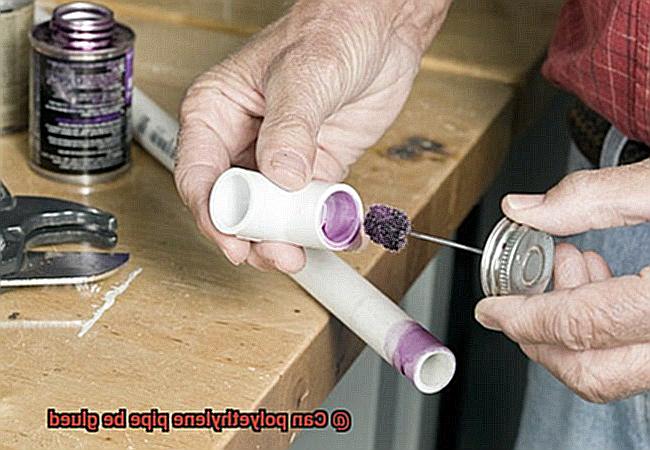
What About PEX Pipes?
Unlike standard polyethylene pipes, certain types of PEX pipes can be joined using mechanical fittings instead of heat fusion. These fittings utilize compression or push-fit mechanisms to create a secure connection between the pipes. However, it’s always advisable to consult the manufacturer’s instructions to determine the appropriate joining method for PEX pipes.
In Conclusion:
To sum it up, polyethylene pipe cannot be glued using traditional adhesives. Heat fusion techniques such as butt fusion and electrofusion are the go-to methods for creating strong and reliable joints in polyethylene pipes. Remember to follow manufacturer guidelines and industry standards during installation to ensure a proper and problem-free connection.
Specialized Adhesives for Bonding Polyethylene Pipes
Look no further. Traditional glues simply won’t cut it when it comes to polyethylene’s unique properties. That’s why specialized adhesives are necessary for achieving strong and reliable bonds.
Here, we’ll explore the world of specialized adhesives for bonding polyethylene pipes, delving into their advantages, disadvantages, and the reasons why they are a game-changer.
Let’s start with solvent-based adhesives. These adhesives work by softening the surface of the polyethylene pipe, creating a chemical bond as the solvent evaporates. While they can be effective, caution must be exercised due to their potential health hazards. Always use solvent-based adhesives in well-ventilated areas to ensure safety.
Now, let’s turn our attention to heat fusion adhesive, which is considered the gold standard for bonding polyethylene pipes. This method involves melting the ends of the pipe sections and pressing them together to create a seamless joint. Heat fusion is particularly effective for larger diameter pipes or high-pressure applications. It requires specialized equipment like a fusion machine or a heat gun and guarantees leak-free connections that are reliable and durable.
If you prefer to avoid adhesives altogether, mechanical fittings are another option. These fittings use compression or mechanical sealing mechanisms to create secure connections between pipe sections. Mechanical fittings are ideal when disassembly may be required or when there are restrictions on using adhesives.
When selecting an adhesive for bonding polyethylene pipes, consider factors such as application requirements, pipe diameter, and pressure rating. Consult with manufacturers or industry experts to determine the most suitable adhesive for your specific project.
To achieve successful bonds with specialized adhesives, proper surface preparation is crucial. Ensure that surfaces are clean, dry, and free from contaminants like dirt, grease, or moisture. For optimal bonding, you may need to use a primer or cleaning solution recommended by the adhesive manufacturer.
Always follow the manufacturer’s instructions and guidelines when using specialized adhesives. Apply the adhesive evenly and allow sufficient curing time before subjecting the joint to pressure or stress.
While specialized adhesives provide strong and reliable bonds for polyethylene pipes, it’s essential to consider factors like temperature, chemical exposure, and UV radiation. Ensure that the chosen adhesive is suitable for your specific application conditions.
Preparing the Surface of the Polyethylene Pipe
Polyethylene pipes are a versatile and durable choice for plumbing and irrigation systems. But how do you ensure a strong and reliable bond when gluing them together? The answer lies in properly preparing the surface of the polyethylene pipe.
First things first, let’s get that pipe nice and clean. Grab a clean cloth or rag and moisten it with a mild detergent solution. Wipe down the entire pipe surface, removing any dirt, grease, or contaminants that could interfere with the adhesive. We want that surface squeaky clean.
Now it’s time to roughen things up a bit. Take some sandpaper or a wire brush and create a slightly rough texture on the exterior of the pipe. This gives the adhesive something to hold onto, ensuring a stronger bond. So give that pipe a little rough love.
After cleaning and roughening the surface, make sure it’s dry as a bone. Moisture is not our friend when it comes to gluing pipes together. Air dry the polyethylene pipe or use a dry cloth to remove any remaining moisture.
Now, let’s choose the right adhesive for the job. There are several adhesives available specifically designed for polyethylene materials. Make sure you select one that is compatible with polyethylene and suitable for your specific application. Read those labels carefully.
When applying the adhesive, follow the manufacturer’s instructions to a T. Apply a thin, even layer onto the prepared surface of the pipe. No need to go overboard here, excess adhesive can create a messy and weak bond. Make sure the adhesive covers the entire joint area for maximum strength.
Now it’s time to bring those pipes together. Firmly join them, applying pressure to the joint for a few minutes to allow the adhesive to work its magic. Use clamps or other securing methods to hold the pipes in place during the curing process. Curing time can vary, so check those manufacturer instructions for guidance.
Applying the Adhesive
With the right adhesive and a bit of know-how, you can achieve a sturdy and reliable bond that will withstand the test of time. So, let’s dive into the world of gluing polyethylene pipes together and discover the secrets to success.
First things first, before applying any adhesive, it’s crucial to give your pipes a little spa treatment. Clean the surface of the pipe thoroughly, ensuring it is free from dirt, grease, or debris. A quick wipe with a clean cloth or a gentle scrub with a mild detergent solution should do the trick.
Once your pipes are squeaky clean, it’s time to choose the right adhesive for the job. Look for a polyethylene adhesive or PE glue that is specifically formulated to bond polyethylene materials effectively. This is vital for ensuring a strong and long-lasting bond.
Now, let’s get down to business. Apply a thin and even layer of adhesive to both surfaces that are being joined together. Think of it as spreading deliciously smooth peanut butter on your bread – you want just the right amount, not too much and not too little. Use a brush or an applicator to apply the adhesive smoothly and evenly.
Once the adhesive is applied, bring those pipes together with confidence. Press them firmly together and hold them in place for a sufficient amount of time to allow the adhesive to work its magic. Follow the manufacturer’s instructions for specific guidance on curing time.
It’s important to note that different adhesives may have different requirements. Some may require additional steps such as priming the surfaces before applying the adhesive or using a primer along with the adhesive. These steps are essential for achieving optimal results, so don’t skip them.
After the adhesive has cured and the bond has formed, it’s time to put your joint to the test. Apply some pressure to ensure that the bond is strong and secure. Conduct a leak test if applicable to make sure there are no unwanted surprises down the line.
Factors to Consider When Determining Whether to Use Adhesive Bonding or Not
When determining whether to use adhesive bonding or not, several factors need to be considered. These factors include material compatibility, environmental conditions, joint strength requirements, ease of application, and cost considerations.
Material compatibility is crucial in adhesive bonding. Different materials require specific adhesives for a strong and durable bond. For example, polyethylene pipes have low surface energy, making them challenging to bond. It is essential to choose an adhesive specifically designed for polyethylene to ensure a successful bond.
Environmental conditions can also affect the effectiveness of adhesive bonding. Extreme temperatures, high humidity, or exposure to harsh chemicals can weaken the adhesive bond and compromise the joint’s integrity. In such cases, alternative joining methods like heat fusion or mechanical fastening might be more suitable.
The strength requirements of the joint are another critical factor. Adhesive bonding can be robust when applied correctly but may not be suitable for high-pressure or load-bearing applications. If the joint will face significant external forces or pressures, exploring other joining methods might be necessary.
Ease of application is another consideration. Adhesive bonding typically requires surface preparation, such as cleaning and roughening, to ensure proper adhesion. Additionally, the curing time of the adhesive should be taken into account, as it can impact project timelines and efficiency. If time and labor constraints are critical factors, alternative joining methods that offer quicker and easier installation may be more appealing.
Cost considerations also play a significant role. Adhesive bonding can be cost-effective compared to alternatives like heat fusion or mechanical fastening.
However, the overall cost will depend on various factors such as adhesive type, surface preparation requirements, and application complexity. Assessing long-term costs, including maintenance and repairs, is essential in making an informed decision.
qIxRFvBvx8M” >
Conclusion
In conclusion, polyethylene pipe can indeed be glued.
This versatile material, known for its durability and flexibility, can be joined together using special adhesives designed specifically for polyethylene. These adhesives create a strong bond that ensures the integrity of the pipe system.
So, whether you’re working on a plumbing project or installing an irrigation system, rest assured that polyethylene pipe can be securely and effectively glued together.



